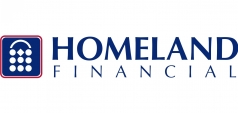In the haste to create an Payroll Tax Cut bill that would allow the passage of funding bill that would keep the government running and protect the payroll tax cut, not too many of us noticed that Title IV of HR 3630 is all about increasing guarantee fees charged by Fannie Mae, Freddie Mac and the FHA for packaging MBS’s to lenders.
IMMAAG thanks a Colorado originator and broker company owner, Don Opeka for his heads up on this quiet little “tax”.
The GSE’s charge an upfront and an on-going guarantee fee for packaging securities. These fees help cover the costs associated with the process and provide some modest amount of “insurance” when pools don’t perform well. The average upfront fees have ranged from 5 basis points (bps) in 2007 to 10 bps in 2010, or about $100 to $200 per $200,000; while the on-gong fees have gone from an average of 17 bps in 2007 to 14 bps in 2010. These guarantee fees are charged to protect the GSEs’ income statement and provide some degree of profit on their MBS activity.
House bill (HR-3630) which was passed to keep the government funded provides for an incremental “minimum” guarantee fee of 10 bps to be added to all MBS’s offered by the GSE’s. It also provides a mandated similar increase in FHA annual guarantee fees of no less than 10 bps on the remaining balances.
A major difference between these new “guarantee” fees and the historic guarantee fees is that the money generated will be deposited directly in the Treasury. It will be part of the general fund and become available only as directed under future appropriations acts. So, the bill may call them guarantee fess, but they guarantee nothing except that homeowners ultimately will bear this new, non-trapnsparent tax increase. And, the only contributor to the funds will be homeowners or prospective homeowners who have mortgages. Yes, the fees are paid by the lenders, but we know that the fees will be covered ultimately by the overall cost of a mortgage. Unlike property taxes which at least are tied to the community, these taxes stay at the Federal level without any specifically designated use.
The mandated minimum 10 bps increase more than doubles the average upfront guarantee fee that already exists and according to the Federal Housing Finance Agency’s 2011 guarantee fee report issue in September 2011 the minor impact of the HARP volume should not require this or any other material increase to maintain the soundness of the guarantee program. The 10 bps is a 71% increase on the 2010 average fee of 14 bps for on-going fees and occurs during a time when the portfolios are getting stronger and performing better.
So, one can only conclude the purpose of this new tax is to find yet a new source of funds, provide no transparency in doing so, make the GSE’s less competitive and give the largest lenders a better chance to portfolio loans and create a private market to replace, not just supplement the GSEs’ liquidity role. That may be a supportable objective, but it seems the appropriations process is not the place to introduce it and the clandestine approach violates the committed to “transparency” we hear so much about.













